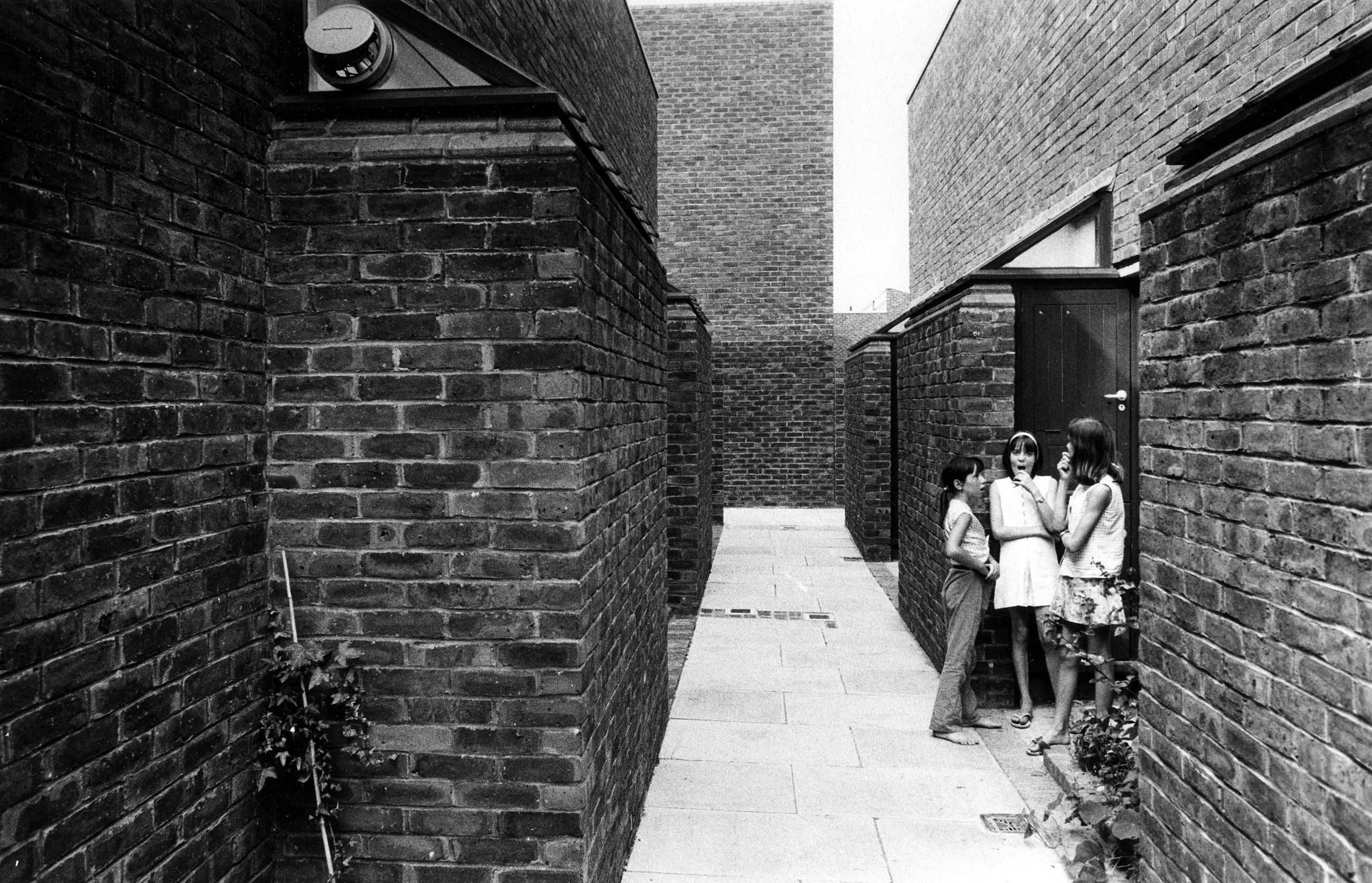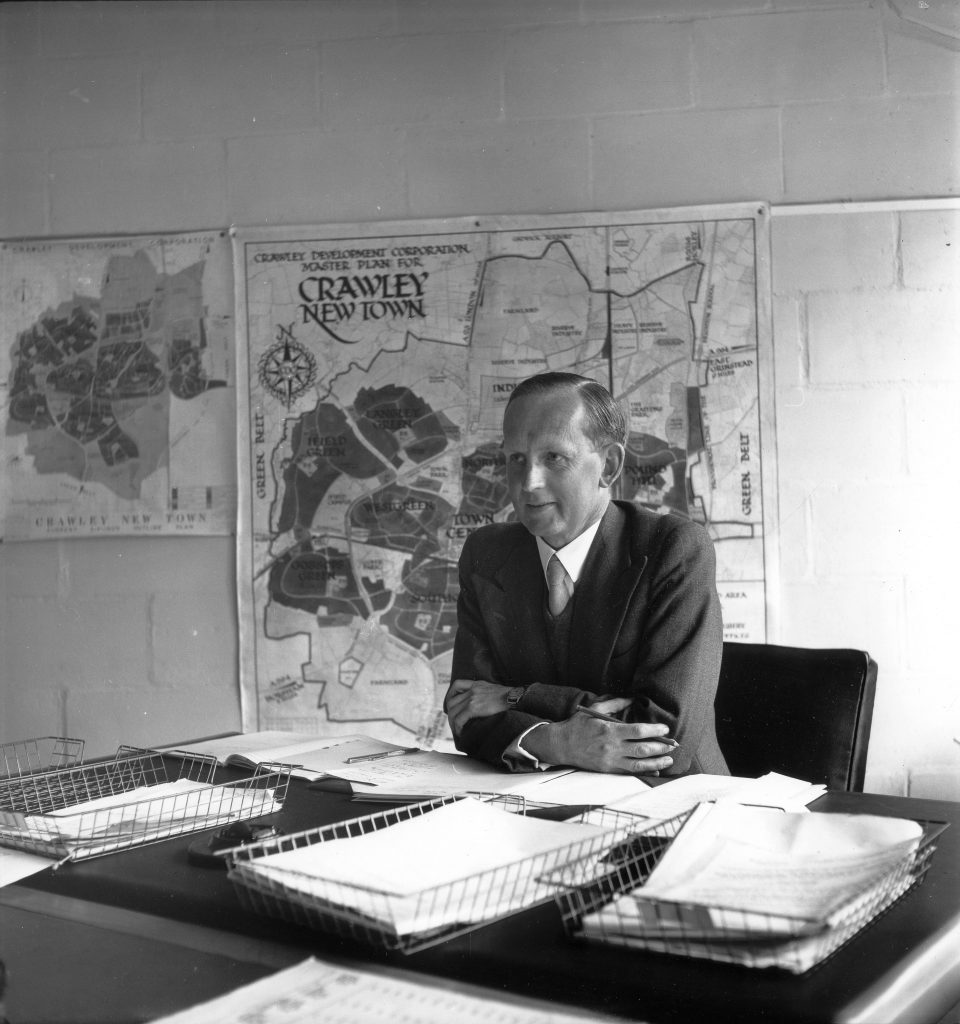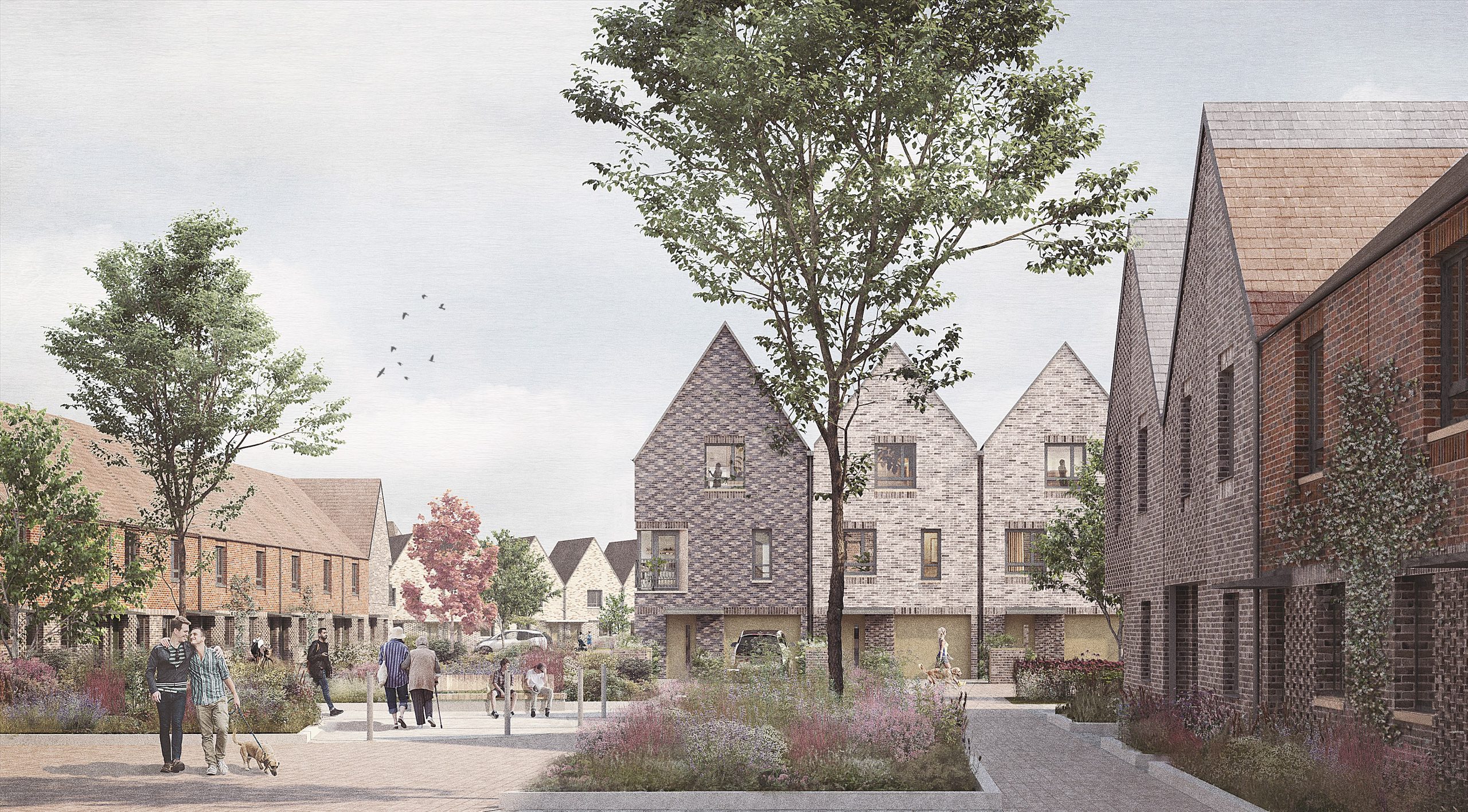
Artikel
10
June
Essential ingredients for a successful new town that the next government needs to know

Tom Mitchell of Metropolitan Workshop
Barring a huge turnaround in the polls, we appear to be on the cusp of a Labour government. In recent weeks Angela Rayner, the shadow levelling up, housing and communities secretary, has floated Labour’s plan to build 1.5 million homes over five years, 40 per cent of which will be affordable.
Labour wants to partly meet this target by creating a number of new towns. The sites for these will be unveiled in the first year of a Labour government, with a New Towns Commission to be set up within the first six months.
Labour has promised that these 21st-century new towns will usher in a ‘new dawn for responsible developers’, providing green spaces, schools, GP surgeries and great transport infrastructure at the heart of these new communities.
Rayner has already declared that the new towns will learn the lessons of the post-war period ‘where the government proactively planned for housing growth at a strategic scale’.

Children chatting in a pedestrian access passageway, Turnpike Place, Crawley, West Sussex
Source:Tony Ray Jones / RIBA Collections
Not many people will disagree with the sentiment so far. But, as ever, the devil will be in the detail.
There will be questions over how they will be funded, procured and realised without compromising the ambition to deliver a truly sustainable outcome – economically, environmentally and socially. To achieve that ambition, we need to go beyond the provision stated so far.
At this point, I must declare an interest. I am new town born and bred and still live in the town of my birth, Crawley. I’ve seen the town evolve throughout my lifetime, observing which components have aged well. My experience of growing up there has had a lasting impact upon my personal and professional life.
It has made me a strong advocate for tenure integration and collaborative design, and given me an appreciation of the importance of community uses and play in residential masterplanning.
In Crawley, the first residents (in the 1950s) enjoyed access to a wide range of neighbourhood amenities, typically within 400m of their homes: a local shopping precinct, a primary school, doctor and dentist surgeries, a community centre.
Crucially, every neighbourhood had a local PlayCentre, a simple prefabricated building where children made friends, and parents met and built their social circle. The original neighbourhoods were truly mixed and tenure blind, and planned around existing landscape assets.
Historic routes, tree belts and copses were retained, providing immediately characterful and playful environments which we all cherished.

Tom Mitchell of Metropolitan Workshop (top row, second right) with his victorious local football team following a tournament in 1985
Source:Metropolitan Workshop
In addition to Labour’s (perhaps obvious) new town ingredients, they will need to establish community quickly – and, as with Crawley, part of the solution relies upon the immediate community offer. New towns must be designed with a programme of relevant meanwhile uses and events to support community, and that should include structured play and safeguarding of existing landscape assets.
New Towns are an opportunity to demonstrate democracy in action
The new towns are also an opportunity to demonstrate democracy in action through well-planned meaningful engagement from the outset.
Local people will reveal hidden layers of vital information to underpin emerging plans. When handled properly and sensitively, their engagement will inform a better brief, generate valuable advocates, help build excitement and reduce opposition – and help create a more socially sustainable outcome.
Governance and a long-term plan will be vital to ensuring these places are well maintained. Milton Keynes’ Parks Trust provides an excellent precedent. Set up in 1992, the charity was kickstarted with an endowment of property valued at £20 million. Carefully managed investment generates more than enough income to manage their 1,800ha in perpetuity.
Lastly, the government also need to be realistic about timescales. All being well, one term might just about see the first phases of new town construction but there will be many planning and legal hurdles.
Homes England chair Peter Freeman will know this difficulty all too well, given his experience at Mayfield Market Town in West Sussex.
The UK is blessed with a well of talented professionals passionate about providing exemplary affordable housing.

H S Howgrave-Graham, architect of Crawley New Town in 1952
Source:Colin Westwood / RIBA Collections
The Architects’ Action for Affordable Housing group has recommended five very sound affordable housing priorities for an incoming government, and these wise policy recommendations should also be considered as part of any new town brief.
My practice’s own ongoing passion is reflected in our recent research papers: People Powered Places explores contemporary methods of engagement best practice, and A New Kind of Suburbia’ explores how suburban housing might respond to address the housing crisis.
We have all the means necessary to make 21st-century new towns a success and to leave a legacy for future generations.
One hopes the incoming government uses the expertise and passion at its disposal to ensure 21st-century new towns deliver the ambition, and are remembered as fondly as my own.
Tom Mitchell is a partner at Metropolitan Workshop

Creating community at Oakfield, for Nationwide Building Society. Metropolitan Workshop’s proposal includes mixed tenures, with homes for later living and a community hub, arranged around communal gardens and playful landscapes.
Source:Metropolitan Workshop
What's your reaction ?
Follow us on Social Media
Some Categories
Recent posts

December 15, 2025
Hoogste Europese rechter bevestigt minimumloonrichtlijn EU-landen

December 09, 2025
Non-bancaire financiering: zó regel je dat

December 05, 2025
Deadline kleineondernemersregeling (KOR) 2026 nadert

December 01, 2025
Inzicht in je cijfers: zo haal je meer winst uit dezelfde omzet

November 27, 2025
Productiviteit stagneert: hoe zorg je voor verandering op de werkvloer?

 Inloggen
Inloggen
 Registreren
Registreren






Comments (0)
No reviews found
Add Comment